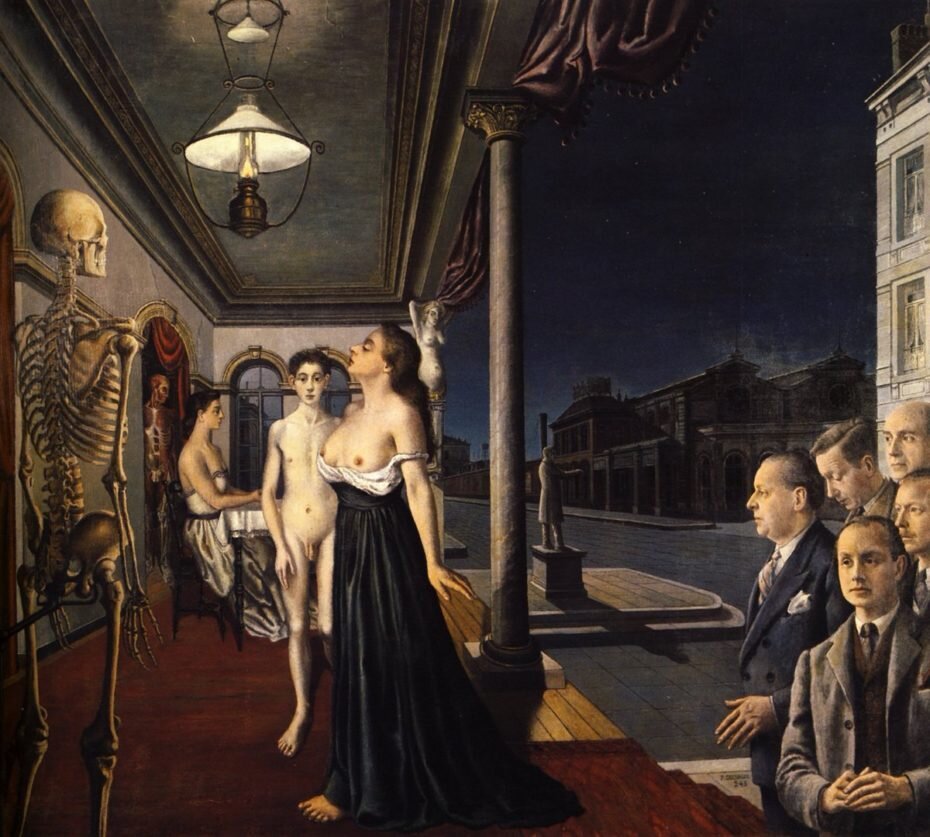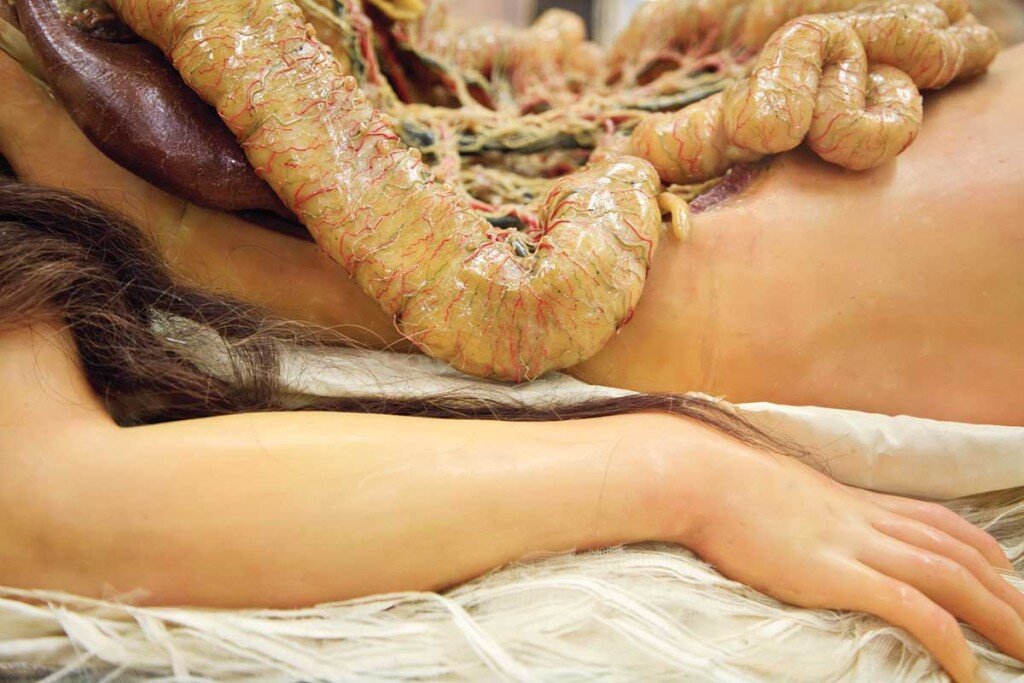 Image 1 of 12
Image 1 of 12

 Image 2 of 12
Image 2 of 12

 Image 3 of 12
Image 3 of 12

 Image 4 of 12
Image 4 of 12

 Image 5 of 12
Image 5 of 12

 Image 6 of 12
Image 6 of 12

 Image 7 of 12
Image 7 of 12

 Image 8 of 12
Image 8 of 12

 Image 9 of 12
Image 9 of 12

 Image 10 of 12
Image 10 of 12

 Image 11 of 12
Image 11 of 12

 Image 12 of 12
Image 12 of 12













PAST CLASS The Anatomical Venus: Wax, Death, God and the Ecstatic: A Six Week Live, Online Zoom Class with Morbid Anatomy Founder Joanna Ebenstein, Beginning June 7
Dates: Tuesdays, June 7, 14, 21, 28 and July 5 and 12
Time: 7 - 8:30 pm ET/New York City time (4 pm - 5:30 pm California time, 12 am - 1:30 am London time, 1 am - 2:30 am Paris/Amsterdam time)
Admission: $145 Patreon members / $165 general admission
PLEASE NOTE: All classes will also be recorded and archived for students who cannot make that time
Text Book: The Anatomical Venus: Wax, God, Death & the Ecstatic (PDF will be provided upon enrollment)
Note: This class includes materials that are emailed to students upon registration. Class fees are non-refundable.
Join Joanna Ebenstein—Morbid Anatomy founder and author of The Anatomical Venus: Wax, God, Death & the Ecstatic—for a six week deep dive into the world of the uncannily lifelike wax anatomized women known as Anatomical Venuses.
Reclining on velvet cushions with Venetian glass eyes, strings of pearls, and golden tiaras crowning their real human hair, Anatomical Venuses were created in eighteenth-century Florence to teach the general public about the mysteries of the human body. The Venus also tacitly communicated the relationship between the human body and a divinely created cosmos; between art and science, nature and mankind. Today, she both intrigues and confounds, troubling our contemporary categorical divides between life and death, body and soul, effigy and pedagogy, entertainment and education, kitsch and art.
Through richly illustrated lectures, readings, exercises, and class discussion, this class will explore some of the many paths that lead from these deeply complicated creations. We will look at the history of anatomical models and their roots in memento mori-themed artworks (and the first anatomical museum founded by a pope!); wax in funerary and death related arts; the cult of the beautiful corpse in art, theatre, at the fairground, and in popular museums; the through-line of the ecstatic from spirituality to sexuality; the study of human anatomy as a popular pursuit for artists and gentlemen; the uncanny as a product of the 18th century enlightenment’s attempt to eliminate superstition; the body on display at the crossroads of science and spectacle; sexual fetishism including necrophilia and agalmatophilia (or the attraction to dolls or statues); and men who created effigies of their beloved.
In so doing, we will see how any piece of material culture might, when looked at deeply, become an object lesson—something that tells us not only about the past, but also who we have become.
Students will be invited to synthesize what they have learned via a final project. This could take the form or an artwork, a written work, a presentation, or anything else of their choice. The content might be a deep dive into a similarly resonant piece of material culture, a reimagining of the Anatomical Venus, the creation of one’s own piece that unifies opposites in a similar way, or something else entirely.
SCHEDULE
Week 1: History: The Birth of the Anatomical Venus
Jung’s symbol and the reconciliation of opposites
Wunderkammern (or cabinets of curiosity) and The Grand Tour
Early Museums
Natural Philosophy/enlightenment ideas of the body
Anatomy as a fashionable pursuit for gentlemen and artists
Male doctors challenging the primacy of female midwives
First wax anatomical museum, founded by a pope
The artists and scientists behind these pieces
Week 2: Wax: From Sacred to Scientific
Death in the christian world view: punishment, sin
Wax in arts related to death and the sacred
Religious healing and saints
Mimesis and baroque art so that "a virtuosity in simulating the ‘truth' of the material world had the paradoxical function of making such images more effective transmitters of supernatural power”
Memento Mori, or objects reminding you of your own death
Frederik Ruysch and his fetal skeleton Memento Mori tableaux
The Leiden Anatomical Theatre
Zumbo’s “Theatres of Death” and the first wax anatomical model
Wax artists who created both saints for churches and anatomical pieces for museums
Week 3: Venus at the Fairground: Popular Anatomical Displays
Sleeping Beauties: Eroticism of the inert female body
Body as edutainment
Carnival dissections
Popular scientific spectacles such as mesmerism
Musee Spitzner
Panopticons and popular anatomical museums
The Cult of the Beautiful Corpse: Sarah Berhardt, The Romantics and Pre-Raphaelites, memorial photography
Paul Delvaux
Madame Tussaud
Week 4: Ecstasy, Fetishism and Doll Worship
Ecstasy: both spiritual/religious and sexual
Bernini’s St Teresa
Sexual fetishism: Amagalphilia, or falling in love with statues, and Necrophilia
Men making effigies of their lovers: Carl Tanzler, Oskar Kokoshka, Real Dolls
Week 5: The Uncanny and the Ghost in the Machine
What happens when we no longer believe in a soul
The Sublime and The Abject
Freud and The Uncanny
Terry Castle, The Female Thermometer and the birth of the uncanny
Jung and the Symbol as a place where opposites can be united
Art of the Uncanny: The Surrealists
Medicine versus religion as a way to cheat death
The Anatomical Venus as the embodiment of two world views no longer congruent
Week 6: Final Project
Joanna Ebenstein is a Brooklyn-based writer, curator, photographer and graphic designer. She is the creator of the Morbid Anatomy blog, library and event series, and was cofounder (with Tracy Hurley Martin) and creative director of the recently shuttered Morbid Anatomy Museum in Brooklyn. She spent ten years researching and photographing anatomical venuses around the world, leading to her book on the topic. Her other books include Anatomica: The Exquisite and Unsettling Art of Human Anatomy, Death: A Graveside Companion, and The Morbid Anatomy Anthology (with Colin Dickey). Her work explores the intersections of art and medicine, death and culture, and the objective and subjective. You can see her Tedx talk—Death as You've Never Seen it Before—here.
Dates: Tuesdays, June 7, 14, 21, 28 and July 5 and 12
Time: 7 - 8:30 pm ET/New York City time (4 pm - 5:30 pm California time, 12 am - 1:30 am London time, 1 am - 2:30 am Paris/Amsterdam time)
Admission: $145 Patreon members / $165 general admission
PLEASE NOTE: All classes will also be recorded and archived for students who cannot make that time
Text Book: The Anatomical Venus: Wax, God, Death & the Ecstatic (PDF will be provided upon enrollment)
Note: This class includes materials that are emailed to students upon registration. Class fees are non-refundable.
Join Joanna Ebenstein—Morbid Anatomy founder and author of The Anatomical Venus: Wax, God, Death & the Ecstatic—for a six week deep dive into the world of the uncannily lifelike wax anatomized women known as Anatomical Venuses.
Reclining on velvet cushions with Venetian glass eyes, strings of pearls, and golden tiaras crowning their real human hair, Anatomical Venuses were created in eighteenth-century Florence to teach the general public about the mysteries of the human body. The Venus also tacitly communicated the relationship between the human body and a divinely created cosmos; between art and science, nature and mankind. Today, she both intrigues and confounds, troubling our contemporary categorical divides between life and death, body and soul, effigy and pedagogy, entertainment and education, kitsch and art.
Through richly illustrated lectures, readings, exercises, and class discussion, this class will explore some of the many paths that lead from these deeply complicated creations. We will look at the history of anatomical models and their roots in memento mori-themed artworks (and the first anatomical museum founded by a pope!); wax in funerary and death related arts; the cult of the beautiful corpse in art, theatre, at the fairground, and in popular museums; the through-line of the ecstatic from spirituality to sexuality; the study of human anatomy as a popular pursuit for artists and gentlemen; the uncanny as a product of the 18th century enlightenment’s attempt to eliminate superstition; the body on display at the crossroads of science and spectacle; sexual fetishism including necrophilia and agalmatophilia (or the attraction to dolls or statues); and men who created effigies of their beloved.
In so doing, we will see how any piece of material culture might, when looked at deeply, become an object lesson—something that tells us not only about the past, but also who we have become.
Students will be invited to synthesize what they have learned via a final project. This could take the form or an artwork, a written work, a presentation, or anything else of their choice. The content might be a deep dive into a similarly resonant piece of material culture, a reimagining of the Anatomical Venus, the creation of one’s own piece that unifies opposites in a similar way, or something else entirely.
SCHEDULE
Week 1: History: The Birth of the Anatomical Venus
Jung’s symbol and the reconciliation of opposites
Wunderkammern (or cabinets of curiosity) and The Grand Tour
Early Museums
Natural Philosophy/enlightenment ideas of the body
Anatomy as a fashionable pursuit for gentlemen and artists
Male doctors challenging the primacy of female midwives
First wax anatomical museum, founded by a pope
The artists and scientists behind these pieces
Week 2: Wax: From Sacred to Scientific
Death in the christian world view: punishment, sin
Wax in arts related to death and the sacred
Religious healing and saints
Mimesis and baroque art so that "a virtuosity in simulating the ‘truth' of the material world had the paradoxical function of making such images more effective transmitters of supernatural power”
Memento Mori, or objects reminding you of your own death
Frederik Ruysch and his fetal skeleton Memento Mori tableaux
The Leiden Anatomical Theatre
Zumbo’s “Theatres of Death” and the first wax anatomical model
Wax artists who created both saints for churches and anatomical pieces for museums
Week 3: Venus at the Fairground: Popular Anatomical Displays
Sleeping Beauties: Eroticism of the inert female body
Body as edutainment
Carnival dissections
Popular scientific spectacles such as mesmerism
Musee Spitzner
Panopticons and popular anatomical museums
The Cult of the Beautiful Corpse: Sarah Berhardt, The Romantics and Pre-Raphaelites, memorial photography
Paul Delvaux
Madame Tussaud
Week 4: Ecstasy, Fetishism and Doll Worship
Ecstasy: both spiritual/religious and sexual
Bernini’s St Teresa
Sexual fetishism: Amagalphilia, or falling in love with statues, and Necrophilia
Men making effigies of their lovers: Carl Tanzler, Oskar Kokoshka, Real Dolls
Week 5: The Uncanny and the Ghost in the Machine
What happens when we no longer believe in a soul
The Sublime and The Abject
Freud and The Uncanny
Terry Castle, The Female Thermometer and the birth of the uncanny
Jung and the Symbol as a place where opposites can be united
Art of the Uncanny: The Surrealists
Medicine versus religion as a way to cheat death
The Anatomical Venus as the embodiment of two world views no longer congruent
Week 6: Final Project
Joanna Ebenstein is a Brooklyn-based writer, curator, photographer and graphic designer. She is the creator of the Morbid Anatomy blog, library and event series, and was cofounder (with Tracy Hurley Martin) and creative director of the recently shuttered Morbid Anatomy Museum in Brooklyn. She spent ten years researching and photographing anatomical venuses around the world, leading to her book on the topic. Her other books include Anatomica: The Exquisite and Unsettling Art of Human Anatomy, Death: A Graveside Companion, and The Morbid Anatomy Anthology (with Colin Dickey). Her work explores the intersections of art and medicine, death and culture, and the objective and subjective. You can see her Tedx talk—Death as You've Never Seen it Before—here.
